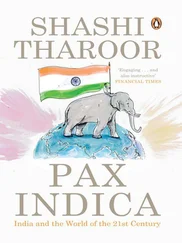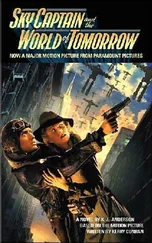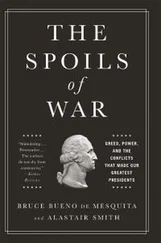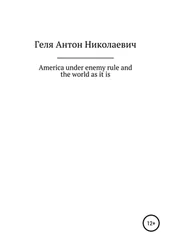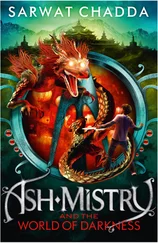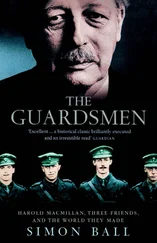Anne Heller - Ayn Rand and the World She Made
Здесь есть возможность читать онлайн «Anne Heller - Ayn Rand and the World She Made» весь текст электронной книги совершенно бесплатно (целиком полную версию без сокращений). В некоторых случаях можно слушать аудио, скачать через торрент в формате fb2 и присутствует краткое содержание. Жанр: Биографии и Мемуары, на английском языке. Описание произведения, (предисловие) а так же отзывы посетителей доступны на портале библиотеки ЛибКат.
- Название:Ayn Rand and the World She Made
- Автор:
- Жанр:
- Год:неизвестен
- ISBN:нет данных
- Рейтинг книги:5 / 5. Голосов: 1
-
Избранное:Добавить в избранное
- Отзывы:
-
Ваша оценка:
- 100
- 1
- 2
- 3
- 4
- 5
Ayn Rand and the World She Made: краткое содержание, описание и аннотация
Предлагаем к чтению аннотацию, описание, краткое содержание или предисловие (зависит от того, что написал сам автор книги «Ayn Rand and the World She Made»). Если вы не нашли необходимую информацию о книге — напишите в комментариях, мы постараемся отыскать её.
Ayn Rand and the World She Made — читать онлайн бесплатно полную книгу (весь текст) целиком
Ниже представлен текст книги, разбитый по страницам. Система сохранения места последней прочитанной страницы, позволяет с удобством читать онлайн бесплатно книгу «Ayn Rand and the World She Made», без необходимости каждый раз заново искать на чём Вы остановились. Поставьте закладку, и сможете в любой момент перейти на страницу, на которой закончили чтение.
Интервал:
Закладка:
Long before she began making notes for We the Living , she reached another conclusion: that political and philosophical ideas, especially those that are heroically clothed and set in large-scale social novels, have the power to shape perceptions and change the world. As scholars have noted, novels and poems have been a surrogate for banned political speech in Russia. Literature as a subversive force is a peculiarly Russian notion, one that was widely celebrated during Rand’s youth. As Lenin was consolidating power in 1917, he invoked not only Karl Marx but also, more tellingly, the works of Ivan Turgenev (Fathers and Sons) , Fyodor Dostoyevsky (Poor Folk) , Maxim Gorky (The Mother) , and especially Nikolai Chernyshevsky (What Is to Be Done?) as inspiration and grounds for action. Lenin said that Chernyshevsky’s novel, a nineteenth-century tale of superhuman sacrifice in the service of a coming revolution, converted him to Communism at age fourteen, and he named his own seminal revolutionary tract What Is to Be Done? in tribute. It’s little wonder, then, that Rand once referred to her own novels as anti-Communist propaganda, or that she henceforth viewed national politics as a morality play whose theme is individual freedom in contest with overt or hidden mob force.
She continued to write stories, though no copies and few accounts of these exist. She would have needed the company of her heroes that fall and winter, because she was losing her only friend. In late November, Olga’s father, who was plotting a final legislative challenge to the Bolshevik usurpers, sent his wife and children south, to the Crimea, near Yalta, an area that was still free of Communist control. Within weeks, he and his liberal colleagues were rounded up, briefly jailed, and threatened with death. He escaped and joined his family. In 1919, the Nabokovs immigrated via Constantinople to Europe and the West. Rand never saw any of them again.
The worst was yet to come. In a campaign of class warfare waged by an ascendant Lenin against the middle class to pacify the poor, Rand’s father’s pharmacy, along with many of the city’s factories, banks, shops, and offices, was raided, stamped with a red seal, and shuttered. Lenin called this “looting the looters.” By encouraging acts of proletarian plunder and retribution against the city’s bourgeoisie, Lenin’s new government consciously initiated the Red Terror. Twelve-year-old Rand was in the store on the day Bolshevik soldiers arrived, brandishing guns. The anger, helplessness, and frustration she remembered seeing in her father’s face remained with her all her life; the tenacity she bestows on her American businessman-hero Hank Rearden as he confronts the U.S. government’s bureaucratic “looters and moochers” in Atlas Shrugged can be seen as her extended version of getting this scene right. Her father was out of business, and out of work.
Although Lenin and the early Communists weren’t overtly anti-Semitic, Jewish merchants were targeted as scapegoats of the new regime, just as they had been in the old one. The government inflamed popular envy of Jews by euphemistic references to the “bourgeoisie,” and Jews were left especially vulnerable to robbery and violence. It’s likely that Zinovy’s and Anna’s St. Petersburg relatives, including the Konheims and Rand’s grandfather Kaplan, also lost their businesses, livelihoods, and life’s work at this time. Still, like others, the Rosenbaums couldn’t believe that the Bolshevik regime would last. In spite of nationalizations, economic conditions didn’t improve for the poor and working class, and support for Communism was eroding quickly in the city. Armies were massing against Lenin in the south. The Rosenbaums decided to wait it out, believing that the Bolsheviks would be routed, although with each passing week mob justice became more ruthless and food and other necessities more difficult to find.
The Stoiunin school continued to hold classes. Rand attended until the end of the 1917-18 term. Without Olga, however, she was again alone, with no one to talk to about the excruciatingly painful events going on around her.
It was at about this time that she began to read the novels of Victor Hugo, the only novelist she ever acknowledged as having influenced her work. Her mother made the introduction; in the evenings, Anna would read aloud from Hugo’s works, in French, to Rand’s grandmother Kaplan, while Rand listened from her bed. Hugo, the foremost Romantic writer of the nineteenth century, was a master of epic melodramas featuring solitary, larger-than-life heroes and psychologically misshapen villains in what were typically scorching critiques of French society and government. The first one of his novels she read was The Man Who Laughs , then Les Misérables . In these and her other favorites, including The Hunchback of Notre Dame and Ninety-Three , the author excoriated kings and queens, the French Revolution and street violence, while also projecting emotional nobility and human grandeur. His preoccupations could hardly have been more pertinent to Rand’s situation, and his insights must have deepened her understanding of revolution. She relished his intricate plots, inspiring themes, and outsized characters, and she fell in love with one of his most radical inventions: Enjolras, the high-minded, again implacable young revolutionary leader in Les Misérables , who would serve as a model for both the handsome aristocrat Leo Kovalensky and the Communist Party hero Andrei Taganov in We the Living . In each of her published novels except Anthem (1938), she retained traces of the plotting techniques and stylistic sleights of hand she learned from Hugo. Her love of his work stayed with her. At age fifty-seven, after everything else in her life had radically changed, she called him the “greatest novelist in world literature.”
By late summer of 1918, the Rosenbaums had had enough. Under threat of a new order compelling them to share their living space on less than equal footing with former servants, factory workers, and soldiers; with whole days now spent in search of rationed millet, peas, and cooking oil; and with the terrifying knowledge that what the revolutionaries regarded as their and their neighbors’ “hoarded” savings had become the object of systematic official searches, they gathered their belongings and departed. Still expecting the regime to collapse, they thought they would be away from home for six months; they were gone for three years.
As We the Living opens in 1922, the Argounov family is wearily returning to a dreary, disease-ridden St. Petersburg from the Crimean peninsula, now also in Bolshevik hands. But in 1918, when the Rosenbaums fled south, the Crimea was a bustling center of White Russian resistance to the Communists and was full of transplanted czarist military officers, aristocrats, statesmen, manufacturers, and merchants from the north. Rand later told a friend that she and her family were forced to walk all the way from Leningrad (as St. Petersburg came to be known in 1924) to Odessa, a journey of nine hundred miles. This is unlikely, especially as she told another friend that the railroad train in which the family traveled broke down in the Ukraine and that they and other passengers hired horse-drawn carts to continue their journey, adding that the carts were robbed by a gang of bandits. In this story, Zinovy managed to safeguard his savings of several thousand rubles by burying them in the straw that lined a cart. It may be that the family was forced to walk after the robbery, though Rand recalled climbing back in the cart, or that the family walked during another leg of the journey and the child recalled the ordeal as being longer than it was.
Читать дальшеИнтервал:
Закладка:
Похожие книги на «Ayn Rand and the World She Made»
Представляем Вашему вниманию похожие книги на «Ayn Rand and the World She Made» списком для выбора. Мы отобрали схожую по названию и смыслу литературу в надежде предоставить читателям больше вариантов отыскать новые, интересные, ещё непрочитанные произведения.
Обсуждение, отзывы о книге «Ayn Rand and the World She Made» и просто собственные мнения читателей. Оставьте ваши комментарии, напишите, что Вы думаете о произведении, его смысле или главных героях. Укажите что конкретно понравилось, а что нет, и почему Вы так считаете.

